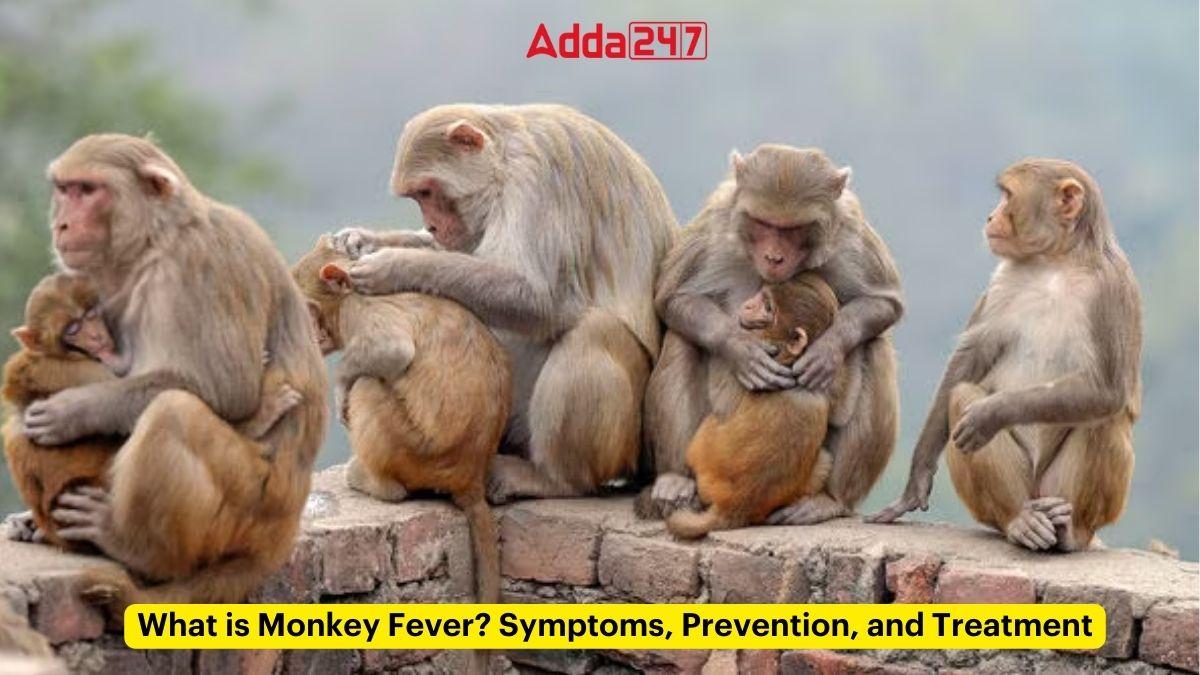What is Monkey Fever?
Kyasanur Forest Disease (KFD), also known as Monkey Fever, has emerged as a significant health concern in Karnataka, India. With two fatalities reported this year and 49 positive cases, the state’s health department is on high alert. Originating from the Kyasanur Forest in 1957, KFD is caused by the Kyasanur Forest Disease Virus (KFDV), belonging to the Flaviviridae family. This article delves into the essentials of KFD, from transmission and symptoms to diagnosis, treatment, and prevention.
Monkey Fever, Recent Outbreaks in Karnataka
The resurgence of KFD has put the spotlight back on Karnataka, particularly in districts like Uttara Kannada, Shivamogga, and Chikkamagaluru. The state has witnessed 49 confirmed cases this year, leading to heightened efforts by health officials to contain the spread. The first death was an 18-year-old from Hosanagar taluk, followed by a 79-year-old man from Sringeri taluk. The majority of cases have been reported in the Uttara Kannada district, signalling a concentrated outbreak zone.
Transmission Mechanisms of Monkey Fever
KFDV transmission to humans primarily occurs through tick bites or contact with infected animals, notably sick or recently deceased monkeys. While large animals can harbor the virus, their role in transmitting KFD to humans is considered minimal. Crucially, no evidence suggests person-to-person transmission or through consuming unpasteurized milk from infected animals.
Signs and Symptoms of Monkey Fever
The clinical manifestation of KFD begins with symptoms typical of viral infections, including chills, fever, headache, and severe muscle pain, progressing to gastrointestinal symptoms and bleeding disorders. The disease takes a biphasic course for some, with a second wave of symptoms, including neurological impairments, surfacing in the third week. The case-fatality rate hovers between 3% to 5%, underscoring the disease’s severity.
Diagnosis and Treatment of Monkey Fever
Early diagnosis of KFD is achievable through PCR or virus isolation from blood samples. Serological testing via ELISA can be performed in later stages. However, there’s no specific treatment for KFD; supportive therapy focused on hydration maintenance and managing bleeding disorders is crucial. Early hospitalization can significantly improve patient outcomes.
Prevention and Control Measures of Monkey Fever
A vaccine against KFD is available and recommended in endemic regions of India. Preventative strategies also include the use of insect repellents and protective clothing to minimize tick exposure. These measures are especially important for residents and travellers in endemic areas to prevent disease transmission.
Important Questions Related to Exams
- What is Kyasanur Forest Disease (KFD), commonly known as Monkey Fever?
- How many fatalities and positive cases of Monkey Fever have been reported in Karnataka this year?
- When was KFD first identified, and what virus causes it?
- Which districts in Karnataka have witnessed recent outbreaks of Monkey Fever?
- How is Monkey Fever primarily transmitted to humans?
- What are the typical symptoms of KFD?
- What is the biphasic nature of the disease, and when does it occur?
- How can Monkey Fever be diagnosed in its early stages?
- Is there a specific treatment for KFD, and what supportive therapy is recommended?
- What preventive measures can be taken to control the spread of Monkey Fever?
Kindly share your responses in the comment section.



 Mankind Pharma Acquires Bharat Serums an...
Mankind Pharma Acquires Bharat Serums an...
 Discovery of Lithium Resources in Mandya...
Discovery of Lithium Resources in Mandya...
 What is Blue Screen of Death?
What is Blue Screen of Death?
